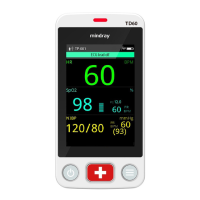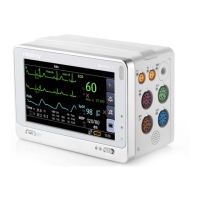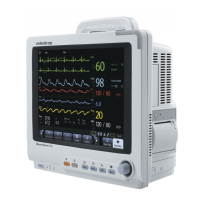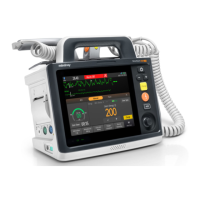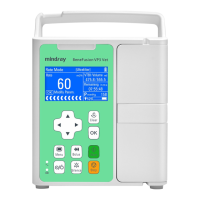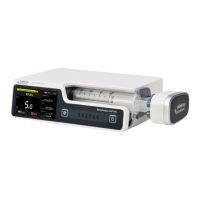BeneVision N Series Patient Monitor Operator’s Manual 14 - 5
• For neonatal patients, make sure that all sensor connectors and adapter cable connectors are
outside the incubator. The humid atmosphere inside can cause inaccurate measurements.
• Up to two measurement sites are available simultaneously.
14.6 Changing the SpO
2
Settings
14.6.1 Changing the SpO
2
Alarm Settings
To change the SpO
2
alarm settings, follow this procedure:
1. Select the SpO
2
numeric area or waveform area to enter the SpO2 menu.
2. Select the Alarm tab.
3. Enter the password if required.
4. Set the alarm properties of SpO
2
and SpO
2
Desat.
For SpO
2
b, you can also set alarm properties for ΔSpO
2
.
• You can switch off the SpO2 Desat alarm only when SpO2 Desat Alarm Off in enabled.
14.6.2 Nellcor Sat-Seconds Alarm Management
With traditional alarm management, high and low alarm limits are set for monitoring oxygen saturation. During
monitoring, once an alarm limit is violated, an audible alarm immediately sounds. When the patient SpO
2
fluctuates near an alarm limit, the alarm sounds each time the limit is violated. Such frequent alarms can be
distracting. Nellcor’s Sat-Seconds alarm management technique is used to reduce these nuisance alarms.
The Sat-Seconds feature is available with the Nellcor SpO
2
to decrease the likelihood of false alarms caused by
motion artifacts. With Sat-Seconds alarm management, high and low alarm limits are set in the same way as
those with traditional alarm management. A Sat-Seconds limit is also set. The Sat-Seconds limit controls the
amount of time that SpO
2
saturation may be outside the set limits before an alarm sounds.
The method of calculation is as follows: the percentage points of the SpO
2
saturation falling outside the alarm
limit is multiplied by the number of seconds remaining outside the limit. This can be stated as the equation:
Sat-Seconds = Points × Seconds
Only when the Sat-Seconds limit is reached, the monitor gives a Sat-Seconds alarm. For example, the figure
below demonstrates the alarm response time with a Sat-Seconds limit set at 50 and a low SpO
2
limit set at 90%.
In this example, the patient SpO
2
drops to 88% (2 points) and remains there for 2 seconds. Then it drops to 86%
(4 points) for 3 seconds, and then to 84% (6 points) for 6 seconds. The resulting Sat-Seconds are:
After approximately 10.9 seconds, a Sat-Second alarm would sound, because the limit of 50 Sat-Seconds would
have been exceeded.
% SpO
2
Seconds Sat-Seconds
2× 2= 4
4× 3= 12
6× 6= 36
Total Sat-Seconds= 52
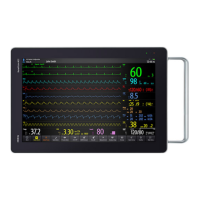
